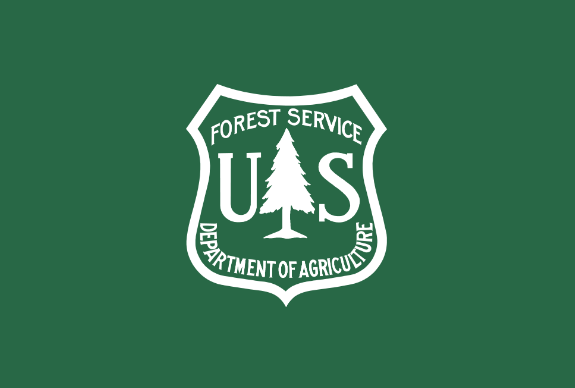Frank Church-River of No Return Wilderness
The Frank Church River of No Return Wilderness encompasses nearly 2.4 million acres of rugged mountains, wild rivers and alpine lakes. The FCRONRW was designated as wilderness in 1980 and is jointly managed by the Salmon-Challis, Payette, Nez Perce-Clearwater, Bitterroot, and Boise National Forests. It's the largest contiguous wilderness in the Lower 48 and the second largest unit of the National Wilderness Preservation System.
History
The FCRONRW has a rich cultural history evidenced by Native American and Euro-American sites and evidence remains that show how humans have long been a component of the Wilderness. Native American tribal history extends to at least 12,000 years before the present described through extensive oral history and illustrated by numerous sites including lithic scatters, villages, pictographs, and bighorn sheep hunting traps. Two principal tribal groups, the Shoshone-Bannock and the Nez Perce, lived and utilized resources within what today is the River of No Return Wilderness. Both the Shoshone-Bannock and the Nez Perce continue to hunt, fish, gather, and access the Wilderness today. The Wilderness was shared in use by the Shoshone-Paiute Tribes and the Confederated Salish and Kootenai Tribes as well. In the early 1800s, fur trapping and later in the 1800s the discovery of gold led to a large boom in population, leaving behind a trail of historic sites.
Protection of the FCRONRW began in 1930 with the administrative establishment of the Idaho Primitive Area and the Salmon Breaks Primitive Area. The Wilderness Act of 1964 required primitive areas and their adjacent lands to be studied for Wilderness suitability, which occurred throughout the 1970s for what would become FCRONRW. The late Idaho Senator Frank Church spearheaded the Central Idaho Wilderness Act of 1980, creating the River of No Return Wilderness from the Primitive Areas and adjacent land. The name of the Wilderness was changed in 1984 to honor Frank Church’s instrumental role in its creation as well as to acknowledge his position as the vanguard of the evolving definition of Wilderness in America.
Recreation
The FCRONRW is punctuated by premier whitewater rivers. The Main Salmon and Middle Fork attract visitors from around the world and are designated as Wild and Scenic in order to preserve their free-flowing nature and protect them for the benefit and enjoyment of present and future generations. The River of No Return name comes from the first documented float trips down the Salmon River, which were completed in massive wooden sweep boats. Once these early river runners reached their destination, currents proved too powerful to return them back to their source and they were forced to dissemble their boats, re-using the wood for lumber.
Backcountry Airstrips
Public Use Airstrips
- Bernard Airstrip
- Cabin Creek Airstrip
- Chamberlain Airstrip
- Cold Meadows Airstrip
- Indian Creek Airstrip
- Mahoney Airstrip
- Soldier Bar Airstrip
- Wilson Bar Airstrip
Emergency Use Only Airstrips
These airstrips are for emergency use only and are not managed as public use landing areas under the current Management Plan.
- Dewey Moore
- Mile Hi
- Simonds
- Vines
Wilderness Photos
Complexes
The majority of this area is within the Frank Church-River of No Return Wilderness.
Located next to the Big Creek airstrip this four-unit campground offers a good staging place to access the Frank Church-River of No Return Wilderness.
Chamberlain Basin is located in the heart of the Frank Church River of No Return Wilderness area. Access is by foot or horseback, and by air. The Forest Service airstrip is maintained to provide access to the basin and surrounding area. Check conditions before flying in.
In contrast to the rugged alpine crags or steep river gorges of the Frank Church Wilderness, Chamberlain Basin is a hospitable area. Chamberlain Creek meanders through the basin among Lodgepole pines and meadow grass. Wildfire has visited the area frequently as nature has intended and the majority of the area is in a state of regeneration.
Prior to European settlement, the Mountain Shoshone (Sheepeater Band) frequented the lush meadows and streams of the basin to hunt large elk herds and other game. When gold has discovered in the 1890s, settlement in the area began to increase. Trapper John Chamberlain is the namesake of the area.
The Chamberlain Basin Guard Station is staffed during from late June through mid-October and host trail maintain crews that work to clear the trails.
Chamberlain Basin Camping Area provides an overnight stay for air travelers and those that have made the trek on foot or horseback.
Cold Meadows lays on the eastern portion of Chamberlain Basin and also has an airstrip for aerial access. Hiking into Cold Meadows from the east begins on the Middle Fork of the Salmon River or from the north from the Nain Salmon River. From the west, access is via Chamberlain Basin or the Big Creek Trail.
Cold Meadows Airfield Day Use Area provides a spot for travelers to rest.
Read an article regarding flying into and camping at Chamberlain Basin.
This very rustic dispersed campground is located adjacent to the Chamberlain Basin airstrip and is used primarily by pilots and their families flying in for the night.
Located within the Frank Church-River of No Return Wilderness. This is a public, backcountry airstrip.
Rafting the Middle Fork of the Salmon River is administered by the Salmon-Challis National Forest. For information, please visit this link!
This portion of the Wilderness is rich in mining history.
Travel up and over Monumental Summit on road #375 to this trailhead that leads to Monumental Lake.









